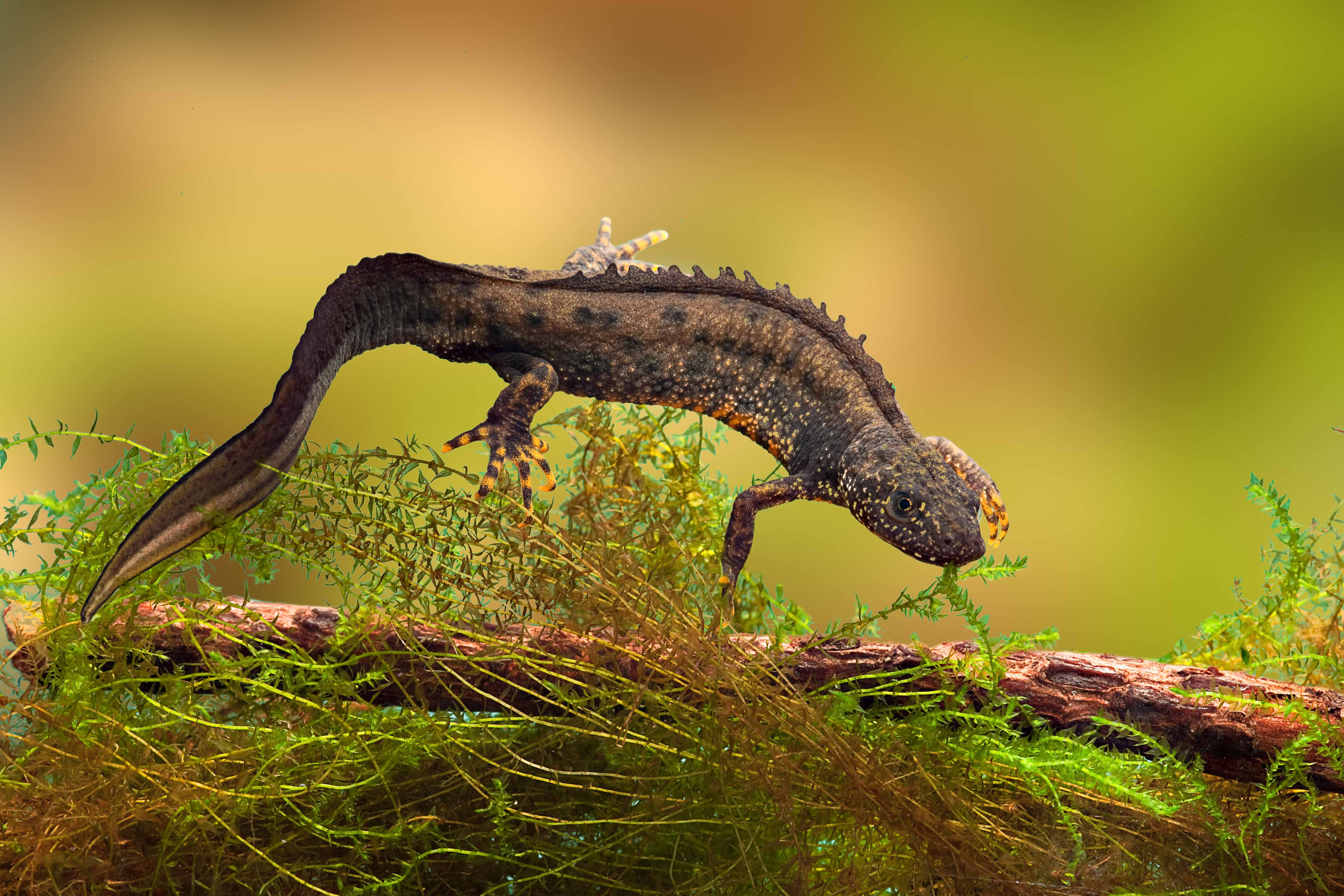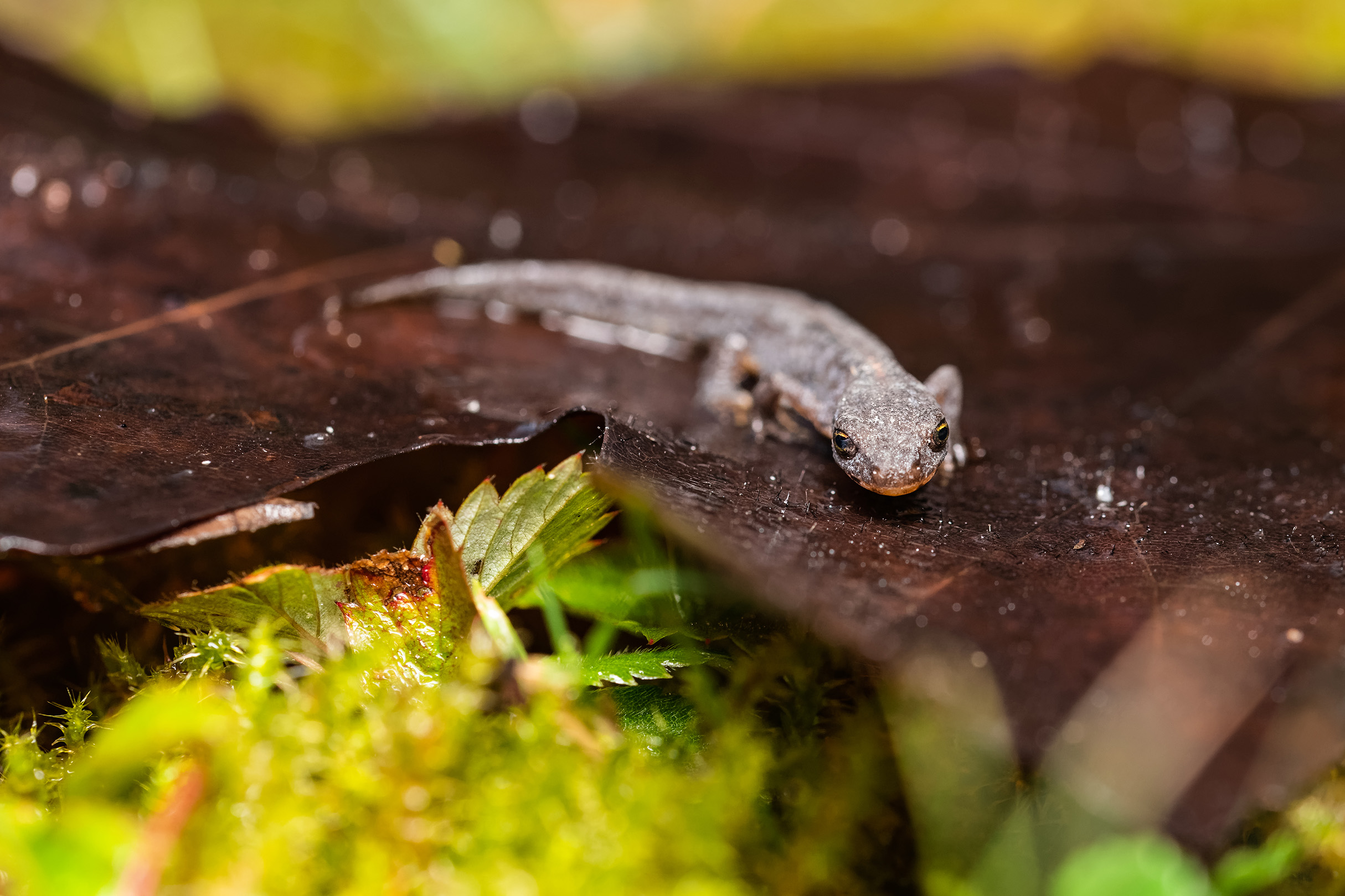

Following a period of dormancy between October and March, the newt breeding season starts immediately. Adult great crested newts mature the eggs and sperm they will need for the next year in the previous summer and autumn. Females lay around 250 eggs between March and July wrapping each egg in a folded leaf underwater.
Adult newts may feed from the start of the breeding season in order to replenish reserves and this is further intensified when they come out of the water after breeding. The majority of adults mostly stay within around 250m of the breeding pond. Small numbers of individuals may disperse as colonisers to distances over 1000m.
The great crested newt is widespread throughout England and Wales, but occurs only sparsely in south-west England, mid Wales and Scotland. It is absent from Northern Ireland and the Republic of Ireland. The total UK population is estimated at around 400,000 animals in 18,000 breeding sites.
Reference: Langton, T.E.S., Beckett, C.L., and Foster, J.P. (2001), Great Crested Newt Conservation Handbook, Froglife, Halesworth.




